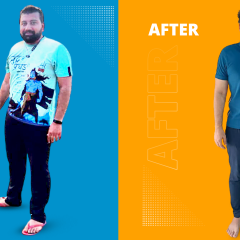
When I was told to be a part of the 100km Oxfam-Goqii trailwalker team, I immediately agreed. My initial reaction was there is nothing new about long distance walking. I do it all the time and do it in the Himalayan and the Shayadri hills. But, yet there was something new about this 100 km trailwalker. It was going to be a challenge for myself- a challenge to test my own endurance as I had never done a 100 km trail walking in 2 days.
Honestly, I will reiterate this point again that there is nothing tough about walking long distance. Walking 15-20 miles (24-32 km) daily is what human bodies are built for. But, sadly none of us do walk that much even in a week in our normal course of routine. So for many when they end up taking up such a challenge of 100 km they get a bit perturbed.
I would say first and foremost think and figure out why are you doing this? Are you doing this for yourself and to build your own endurance? Are you doing it because you are being forced -because you think you will be judged based on doing this challenge? Are you doing this to prove a point to others ? Once you have the answer for why you are doing it you will be at ease in deciding your next step. I would say do it for yourself.
While this is an Endurance Challenge it is also largely about team work and a strategy game. It’s
about patience and temperament.
I am a rookie to the 100 km challenge but, I know for sure I am mentally prepared and I ain’t thinking too much about it. Initially, I was not sure what to expect but after two practice session of 25 km each at Garudmachi also known as the Eagles Plateau, I am clear of what to expect.
With exactly 10 days left for the D -Day, here are a couple of dos and don’ts for the trailwalker that might help. This is based on a few learning from my practice session.
Dos: Get your footing right during your practice session especially if you are doing treks. Do not
injure yourself during the practice. Do enough strength training for neck, shoulders and legs.
Dos: Ideally it would be good to practice in a mixed terrain ( both tar and hillocks) so you are
comfortable on the day of the walk.
Dos: Be positive and happy all along the trail. Sing to yourself, laugh and motivate yourself.
These ease the pressure on you and your team mates.
DOs: On the day of the trailwalk try and rest a bit at checkpoints and then move forward. Target
to cover 60% on the first day . Believe me the remaining 40% will be easy on you.
DOs: learn to walk in the heat no matter how grim, awful and humid you feel.
Dos: Remember to thank your support crew after the event is over. Because they are going to be the ones who are going to be there for you waiting to make you feel comfortable with whatever you might need after long hours of walk. They will motivate you and make sure you do not have to think about anything else and just concentrate on your walk. So thank them.
DON’T talk much on the trail. Conserve energy. But do not be afraid to communicate uneasy.
DON’T over load the backpack you are carrying with you on the trail. 1 to 2 litres of Water is essential and your personal medication if you need anything on the trail. You really don’t need so many eats and energy bars on you at all times. Let your support crew carry the extras.
DON’T argue with your teammates. Always try and come to a consensus on any issues that may arise. Remember this is a team effort.
DON’T get overexcited early on in the walk. Walk at your pace lest you end up getting tired very soon.
Don’t: Walk with earphones on it could prove dangerous.
Don’t: Lastly do not litter. We are all educated people. However, tired you may be and might just want to throw away that bottle down.. do not do it. Keep it with you in your bag and dispose it off later.


 Breakfast like a KING, lunch like a PRINCE and DINE like a PAUPER!! Ever wondered why it is said so??
Breakfast like a KING, lunch like a PRINCE and DINE like a PAUPER!! Ever wondered why it is said so??


